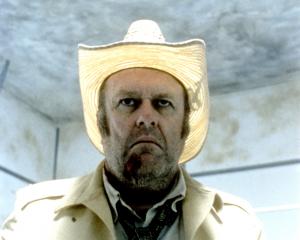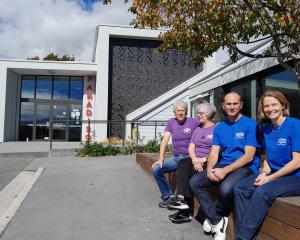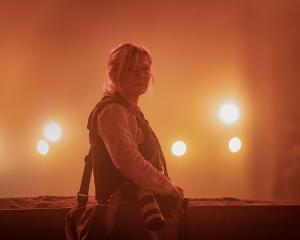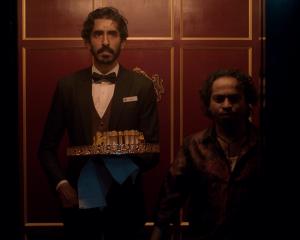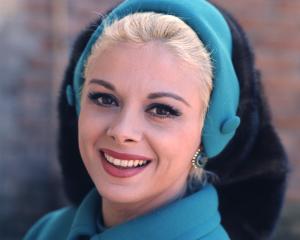But when he alights, he won't find the gargoyle-infested, bricks-and-mortar city that Washington Irving first coined "Gotham." He won't battle the Joker on wet cobblestones, or loom in the shadows of a dominant spire that evokes the Empire State building.
Heath Ledger isn't the only scene-stealer in The Dark Knight. In the newest incarnation of the movie franchise, the mythical Gotham City - long assumed to be an allegorical New York City - is unmistakably based on Chicago.
Not that a move to the Midwest is such a stretch. Neal Adams, who has illustrated Batman for DC Comics since the 1970s, says he's always thought of Chicago, with its 1940s mobster history and miles of dark alleys, as the basis for Gotham City.
"Chicago has had a reputation for a certain kind of criminality," says Adams, who lives in New York. "Batman is in this kind of corrupt city and trying to turn it back into a better place. One of the things about Chicago is Chicago has alleys (which are virtually nonexistent in New York). Back alleys, that's where Batman fights all the bad guys."
But Chicago's back-of-the-building ethos isn't the only reason the Dark Knight filmmakers chose to focus on the Second City's style.
"I think the architecture of the city is really brilliant, fantastic," said director Christopher Nolan, as he strolled the red carpet while heading into Chicago's premiere of the film last week. "That gave us an incredible amount of variety that's used as the background for the film."
Nolan, who once lived in Chicago, spent three weeks here shooting the previous film, Batman Begins. For The Dark Knight, he expanded that time to three months.
And by no means did his cameras shy from the buildings and landmarks, elevated trains and underground streets that easily identify the Windy City: He flipped a semi-truck on LaSalle Street. He blew up abandoned buildings on the city's west side. Cameras pan above the Chicago Board of Trade, the Chicago River, the Magnificent Mile.
Chicago's modern feel lent itself well to Gotham City, says James McAllister, the key location manager for The Dark Knight.
"Everywhere you look is a good angle," McAllister says. "Visually it's that look like you would see in the comic books. You can see all the way down the street and you can turn a corner and you're under the El or in an alley that's dark."
That's not to say the latest filmmakers abandoned New York all together.
In Nolan's Batman Begins, Gotham City's layout is more similar to New York's, McAllister says. "There's all these different boroughs, with rivers to interconnect. I think it's hard to get away from that, because Gotham is based on New York," he said.
And in a wide shot from the early part of Nolan's first Batman movie, Gotham appears more like a coastal harbor than a lakeside city, its every square inch bristling with tall buildings, much like in New York.
Gotham is "New York from 14th Street down, the older buildings, more brick-and-mortar as opposed to steel-and-glass," says Paul Levitz, the president and publisher of DC Comics, which has held onto the Batman franchise since the hero's debut in the 1940s.
According to the Gotham Center for New York City History, Irving first referred to New York City as Gotham in the 19th century. A history of early New York, by Edwin G. Burrows and Mike Wallace, is starkly titled Gotham.
In Tim Burton's 1989 classic Batman, newspaper reporters pore over a map that looks like Manhattan; Jack Nicholson's Joker trashes artwork at the "Fuggenheim," and the mayor is a dead ringer for Ed Koch.
Still, Levitz says Batman's Gotham has evolved through the decades as different writers and illustrators - and now filmmakers - have taken on the series.
"Each guy adds their own vision," Levitz says. "That's the fun of comics, rebuilding a city each time."
But that does little to quell the debate over which metropolis is the real Gotham City.
Life-long New Yorker Gerry Gladstone, who is an owner at Midtown Comics in Times Square, says the first writers and illustrators of the Batman comics worked in New York and used the city for inspiration.
"Their offices were in Times Square and that's where these stories came from," Gladstone says. "Gotham has always been a stand-in for the seedier side of New York City."
Standing in front of the Chicago Board of Trade (the inspiration for Wayne Manor in the latest Batman movie) wearing his yellow, trading-floor jacket, Wayne Brown, 45, of Chicago, says his city has always been the model for Gotham.
"Our buildings, in a dark setting, would make it a gloomy, gloomy downtown," Brown says. "When we read the cartoons we didn't see any Twin Towers or Empire State Building. They're always showing the Board of Trade."
It's that pressure-cooker, street-smart sense that makes Chicago a real - instead of manufactured - Gotham, says Richard Moskal, director of the Chicago Film Office.
"I think (Chicago) changed people's minds about what is Gotham in terms of the real sense ... and what it is fictionally," Moskal says.
Realism certainly is the calling card of The Dark Knight. Unlike the previous Batman movies - in which Gotham's streets are ever dark, often abandoned and shrouded in mist - Nolan's cityscapes don't stray too far from a typical workday in Chicago, where office workers on lunch breaks dart in and out of cafes; businessmen roll suitcases and shake hands in front of City Hall; and long shadows crisscross the skyscraper canyon of LaSalle St on a bright summer day.
"We make (Chicago) look a lot grittier through the camera in the story," says Gary Oldman, who plays Lt. James Gordon, "but I think initially there were artists' impressions of cities, and they take a skyscraper from here and a skyscraper from there and a monorail from somewhere.
"And (Nolan) looked at this picture and he said, 'That's Chicago - we don't need to make this up ... we can actually physically go and shoot in a city. It's Gotham.'"


